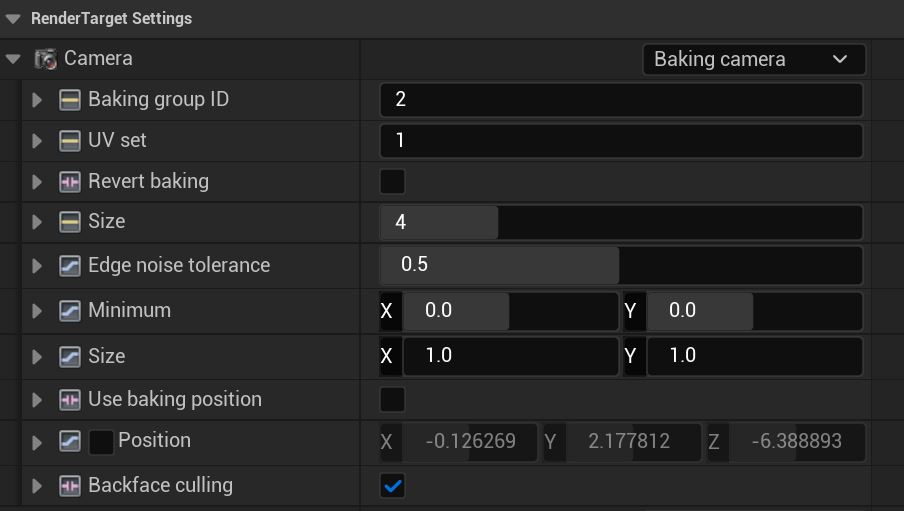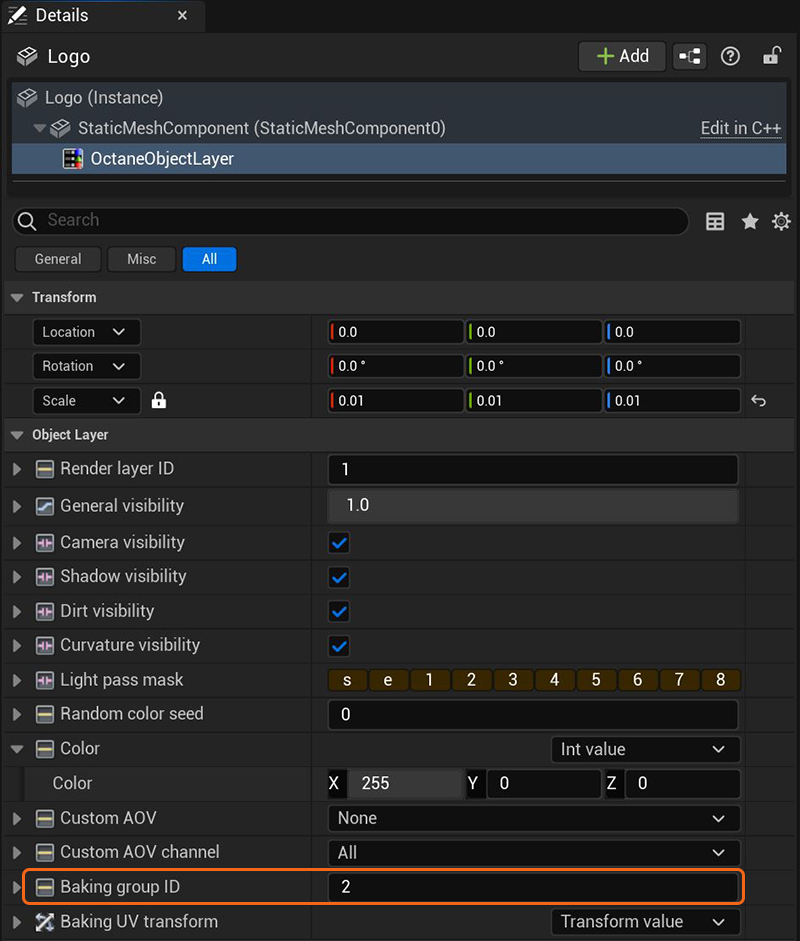
The Texture BakingA process in which scene lighting is "baked" into a texture map based on an object's UV texture coordinates. The resulting texture can then be mapped back onto the surface to create realistic lighting in a real-time rendering environment. This technique is frequently used in game engines and virtual reality for creating realistic environments with minimal rendering overhead. system allows you to extract lighting information from a Mesh surface by using its UV map to generate a Texture that can map back to the Mesh later on. In OctaneRender®, texture baking is implemented as a special type of camera that, in contrast to the Thin Lens and Panoramic cameras, has one position and direction per sample. The way these are calculated depends on the input UV geometry and the actual geometry being baked.
This Camera type is accessible by clicking on the Octane Render Target Actor, then clicking on the Details panel, followed by clicking on the Camera dropdown. For each sample, the camera calculates the geometry position and normal, then generates a ray that points towards it using the same direction as the normal, from a distance of the configured kernel’s ray epsilon. Once calculated, OctaneRender® traces the ray in the same way as other Camera types.

Figure 1: The Baking Camera types
The Baking Group ID needs to correspond with the Baking Group ID found in the scene object's Octane Object Layer parameters (figure 2).

Figure 2: Accessing the Baking Group ID on a scene object in its Octane Object Layer parameters
Baking Group ID - Specifies the Baking Group to bake. By default, all objects belong to the default Baking Group number 1. You can arrange new Baking Groups by using Object Layers or Object Layer maps, similar to the way render layers work.
UV Set - Determines which UV set to use for baking.
Revert Baking - If enabled, the camera rays flip, letting you use the geometry as a lens.
Size - Specifies the number of pixels added to the edges of the UV map. The default padding size is set to 4 pixels, with 0 being the minimum and 16 being the maximum size.
Edge Noise Tolerance - Specifies the tolerance for keeping or discarding edge noise.
Minimum - Coordinates the bounding region's origin for baking in UV space.
Size - The size of the bounding region for baking in UV space.
Use Baking Position - If you use a baking position, camera rays trace from the specified coordinates in world space instead of using the Mesh surface as a reference. This is useful when you bake within position-dependent artifacts, such as the ones produced by Glossy or Specular materials.
Position - The camera position for position-dependent artifacts such as reflections.
Backface Culling - Determines if the baking includes back-facing geometry.